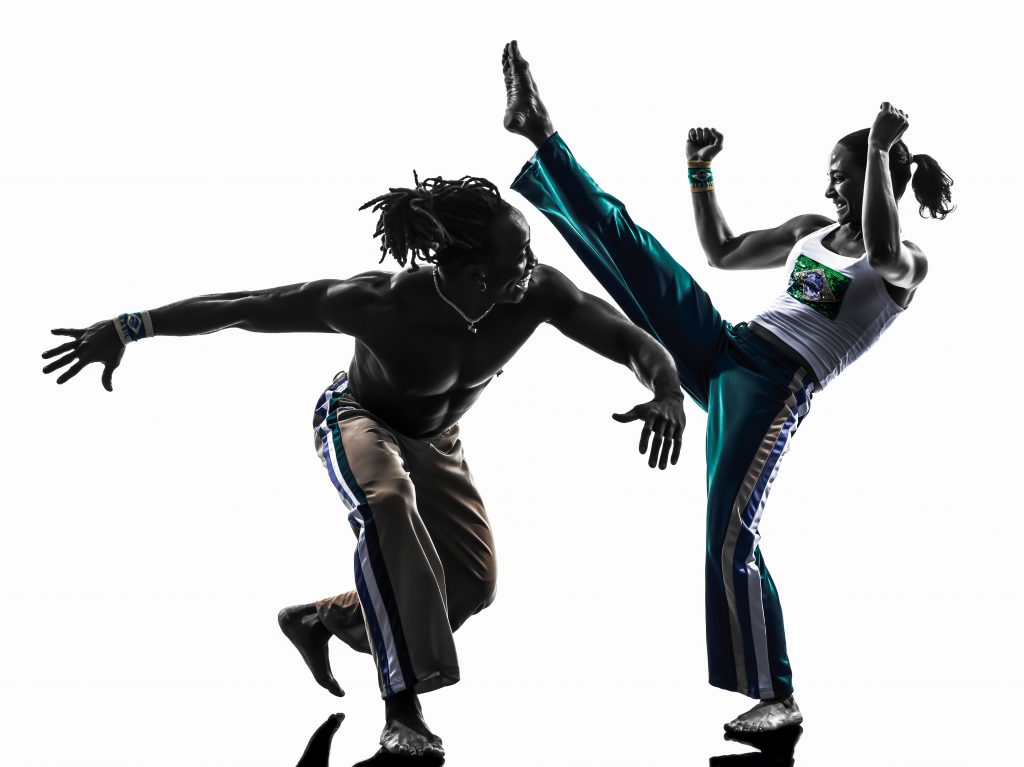
Aché Brasil Academy makes martial arts fun
By Adam Tatelman, Staff Writer
Capoeira probably has one of the most badass origin stories of any martial art in the world. In the 17th century, Portugese conquerors began to export African slaves to Brazil, largely to harvest sugar cane. The slaves secretly practiced self-defense disguised as music and dance, preparing for the day when they would break for freedom, or start a rebellion. Both an African and Brazilian art, capoeira now exists as an international institution, bringing this unique aspect of Brazilian culture to the world.
One of the largest capoeira groups is known as the Aché Brasil Academy. They’ve got locations in many countries, including Canada, America, Brazil, and Japan. Students have the opportunity to visit exotic locations as exchange Capoeiristas—that is, practitioners.
I was fortunate enough to attend ABA during a visit from a Brazilian Mestre, or master; though he did not speak English, he was a confident leader who spoke clearly through his movements. Some of his methods were slightly unorthodox, though certainly effective. A particularly intense assisted back stretch comes to mind—although it felt like a combination between the medieval rack and a full nelson hold, it definitely loosened me up.
The atmosphere of ABA feels much more lighthearted and fun than most martial arts studios I have visited. Since Capoeira is explicitly about dance, all practice is done to a musical rhythm. It’s an inspiration for modern breakdancing, after all. There is a great sense of community and camaraderie between the students and their instructors; everyone is much more familial than militarized martial arts schools are. Even sparring is called playing.
Capoeira techniques all have Portugese names. The default stance is called ginga, which means “rocking back and forth.” More a rhythmic set of footwork than a static stance, this is the foundation for Capoeira’s interplay of kicks and boxing-like evasion. Since all Capoeira is dance, the footwork always matches the rhythm of the music. Students spar inside the roda (circle), operating in concert both as dance partners and opponents.
Is modern commercial capoeira effective self-defence? Because the techniques require lots of space to perform, it’s not something I’d rely on indoors or in a SkyTrain car. It’s flashy, not too versatile, and less practical than something like boxing. However, it offers great cardio conditioning, a strong sense of balance and rhythm that transfers well to other practices, and a lot of acrobatic tricks that are sure to impress your friends.
Rather than testing for a promotion every year, students progress from one “class” to the next at their own pace following a minimum time commitment. After practicing rhythm and basic stances for eight intro classes, students may progress to level 1. After 48 Level 1 classes, students must ask the Mestre’s permission to join Level 2 Advanced classes. Anything above intro level requires a Capoeirista uniform, so be prepared to pay $100 for one as part of a long-term commitment. The first intro class is always free.
Aché Brasil Academy is located at 341 East Broadway. Outside of Intro, Level 1 and Level 2 classes, they offer roda classes on Saturdays at 12:30, free of charge to all students. You can practice acrobatics and learn to play music at 8:00p.m. on Tuesdays and 7:30p.m. on Fridays, or try Brazilian Dance at 6:30p.m. Thursdays. For a full schedule and list of locations, visit achebrasil.ca

